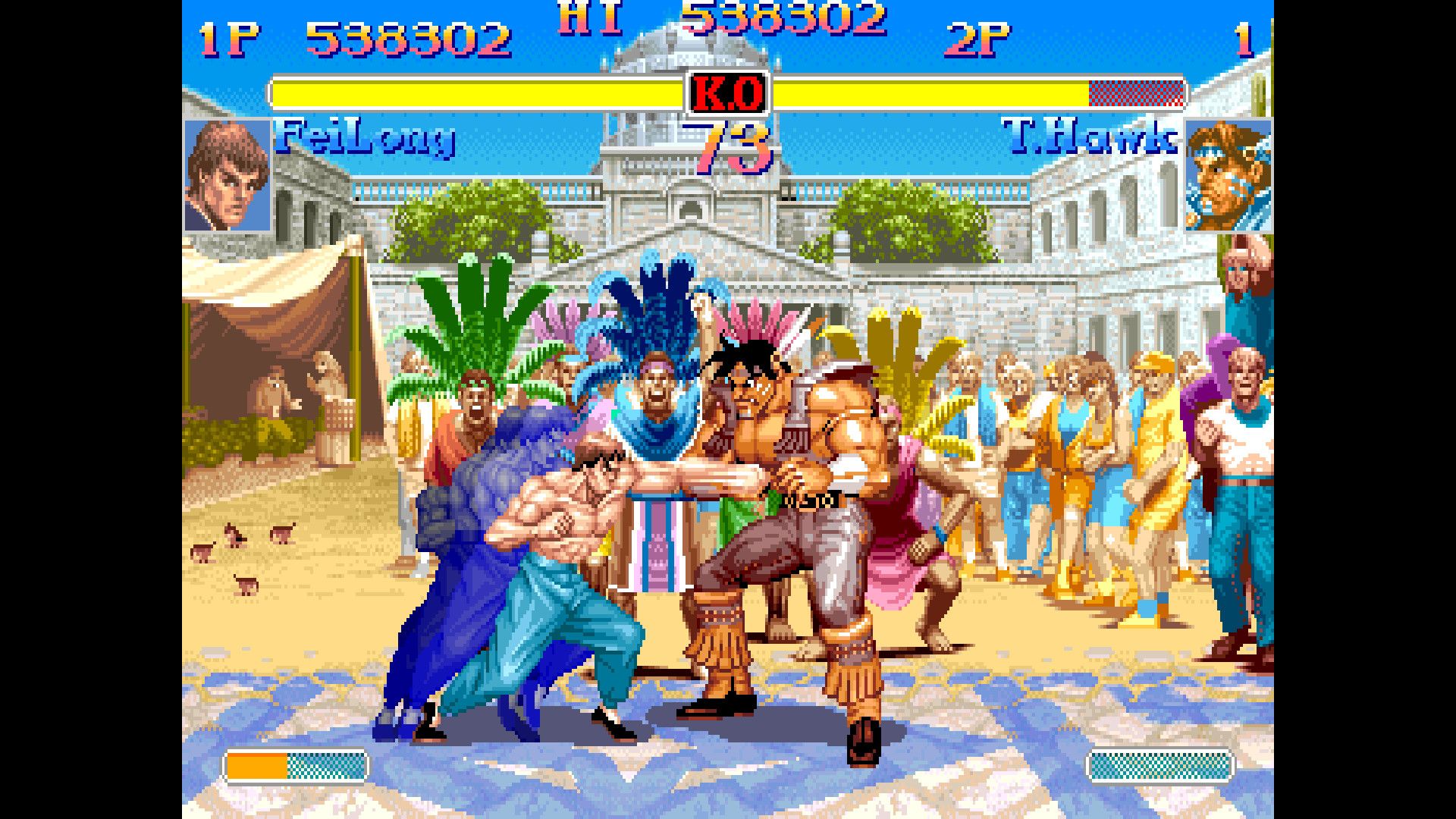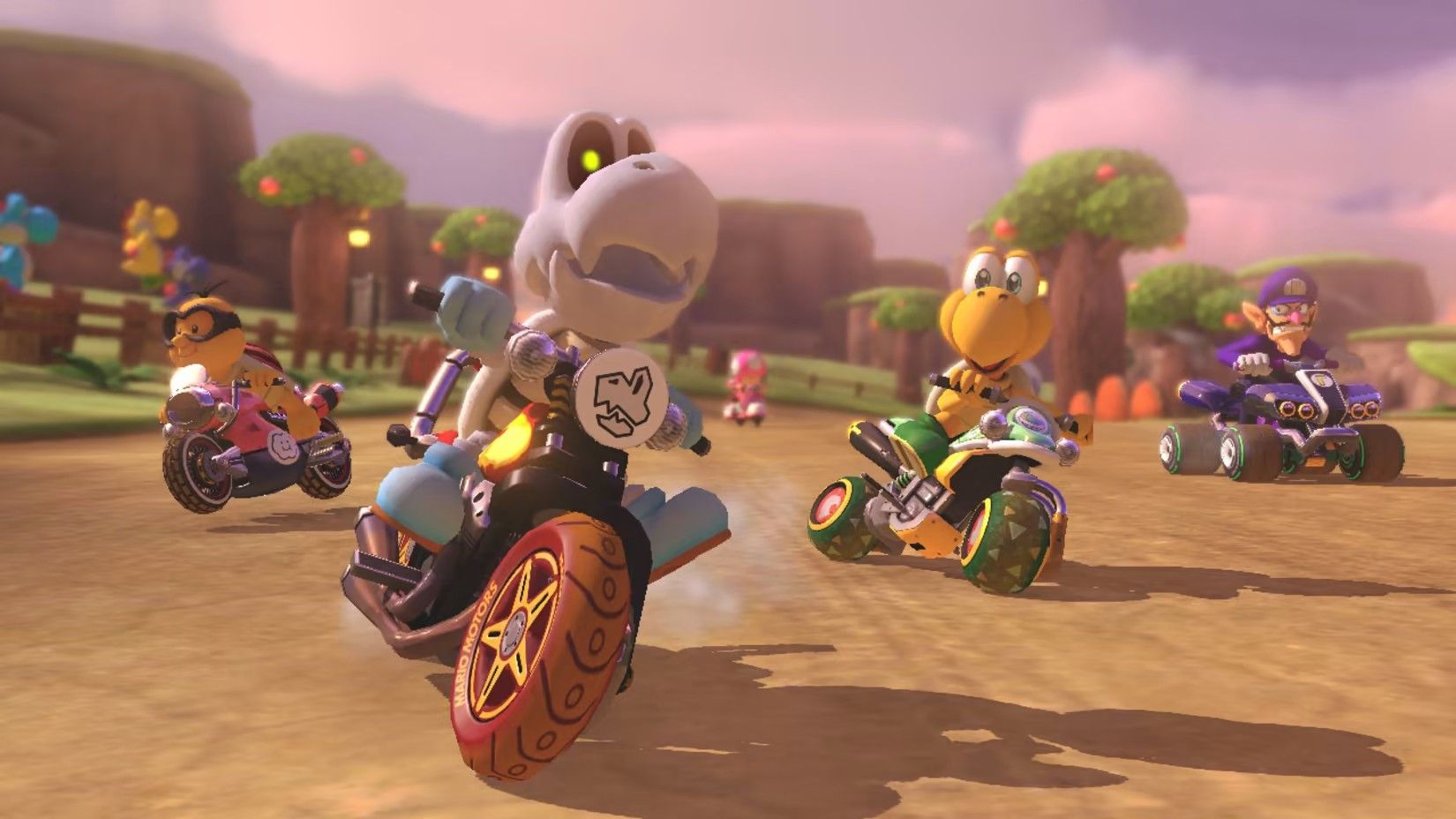Summary
- Turbo modes boost gameplay speed, adding intensity and excitement to classic and modern games.
- Turbo mode serves as a secret difficulty setting, challenging players’ reaction speed and precision.
- Many games could benefit from turbo modes, but technical limitations and balance concerns hinder widespread adoption.
Most games give players a hefty list of graphics settings and difficulty options, but very few titles let you change the overall game speed. While that may sound like an odd choice to have, plenty of arcade classics have proven its value.
Turbo Modes Gives Gameplay a Boost
Turbo mode (not to be confused with turbo buttons) is a setting that significantly increases a game’s speed, giving a massive boost to movement, attack animations, and just about every other aspect of gameplay. The result is a faster, more intense, and often more exhilarating version of your favorite game.
Capcom was one of the first developers to release a game with turbo mode, having debuted the feature in the console ports of Street Fighter II Turbo: Hyper Fighting and Championship Edition. Unlike the original arcade versions of Street Fighter II, the SNES and Mega Drive/Genesis ports include an option to select between multiple speeds, with some running even faster than the arcade versions of Turbo and Super Turbo. Turbo mode became a standard feature for Capcom fighting games throughout the 90s, becoming a staple feature for other notable franchises like Darkstalkers and Marvel vs Capcom.
Since then, turbo mode has made occasional appearances in other genres. The hack-and-slash Devil May Cry series—also developed by Capcom—includes a turbo mode in each of its “Special Edition” re-releases, bringing even more energy to the series’ already fast-paced combat.
Similarly, the Uncharted games include a “fast motion” toggle that adds even more chaos to the series’ frantic gun fights and car chases. Turbo mode has also expanded outside the realm of action games, with some racing games including similar speed options, such as the 200cc engine class of Mario Kart.
Higher Speeds Bring Thrilling Challenges
Although turbo mode is designed around a simple concept, its inclusion can be a game-changer. For any game that requires fast reflexes, turbo mode isn’t just a boost to the game’s speed, but it also acts as a secret difficulty setting. Higher speeds obviously require quicker reaction times, but there’s even more complexity to turbo mode than you would expect.
In competitive fighting games and solo action games, turbo mode increases the number of frames per second (FPS) while displaying animations at their original frame rate. To accomplish this, the game will routinely skip animation frames, speeding up all actions by a considerable amount.
These changes result in a more reactive and unforgiving experience, but it’s one that anyone looking to challenge themselves will easily appreciate. With turbo mode, you only have a split-second to avoid attacks and even less time to make frame-perfect inputs. Stringing together elaborate combos is made even more difficult by the punishingly precise timing that turbo mode demands.
Even if you have put hundreds of hours into a game, it can take a while to get accustomed to the faster pace. However, turbo mode’s thrilling speed and massively rewarding challenge make it the best way to experience some games.
Not every version of turbo mode is designed in the same way. Aside from altering the frame rate, many games simply multiply your movement speed by a specific amount and change a few other gameplay elements to deliver an even tougher experience. Mario Kart‘s engine classes normally don’t change anything other than the average vehicle speed, but 200cc secretly raises the aggressiveness and driving skill of the AI racers.
Another notable example is the bullet-hell dungeon crawler Enter the Gungeon, which features a turbo mode that raises movement and bullet-speeds for all characters and weapons. However, it also heightens difficulty by granting enemies a disproportionally larger speed boost than your player character. Vampire Survivors offers a similar challenge in the form of its “hyper mode,” which greatly increases the speed of your character, your enemies, and all on-screen projectiles.
The best part of any turbo mode is that it’s entirely optional. Not everyone enjoys the breakneck speed of Mario Kart‘s 200cc races, and plenty of longtime fighting game fans prefer the methodical pacing of the original Street Fighter II over its speedier Turbo editions.
Even if you do prefer faster and more challenging experiences, the standard speed of most games is designed to help you understand their controls and mechanics before ramping up the difficulty. It’s a clever alternative to standard difficulty options, but one that too few games ever use.
Many games struggle to find new ways to challenge players without falling back on time-wasting grinds and outright cheating, which is why turbo mode is the perfect addition to any skill-based game. Despite its simplistic concept, turbo mode can radically transform familiar experiences into exhilarating challenges without altering the core mechanics. Essentially, turbo mode is the same game you know and love, just faster and better than before.
Why Don’t More Games Have a Turbo Mode?
Despite making its first appearance back in the 90s, turbo mode is rarely seen in modern games. Apart from the aforementioned examples, most games lack any speed setting, and even the fighting game genre has seemingly abandoned turbo mode. However, there are a few reasons why turbo mode is omitted from most games.
As mentioned before, most turbo modes function by having a game run at higher frame rates. While 2D sprite-based fighting games and next-gen ports of older action games are capable of handling this performance boost, most modern games are already pushing their hardware to the limit. Turbo mode would likely be too demanding for many games to handle, or would at least require severe graphical downgrades to run smoothly.
Even games that have a turbo mode, such as Devil May Cry 5: Special Edition, may require you to disable ray-tracing and other hardware-intensive graphical effects to run properly.
Turbo modes would also create additional work for the developers of competitive multiplayer games. Most online multiplayer games attempt to deliver a balanced experience through patches and content updates. Balancing weapon lists or character rosters is already a delicate process for just one game mode, but the addition of a turbo mode in these titles would only make it more difficult.
This is especially true for fighting games, wherein minor changes to i-frames and hitboxes can impact the quality of a character. Any balance changes would not only need to account for the standard speed but also how it would affect gameplay in turbo mode.
Even games capable of handling a turbo mode are perfectly fine without its inclusion. The standard speed of any game is the intended way to play. Some games are meant to deliver action at breakneck speeds, while others have slow pacing baked into their design. Some modern games are so fast-paced that a turbo mode would be practically unplayable. If you really want to play a sped-up version of a recent release—including games that already have a turbo mode—you can probably find a mod for that.
Despite these reasons, more games should still consider adding turbo modes. Online multiplayer games could avoid potential balance issues by limiting the feature to offline modes, similar to Tekken 7‘s “turbo battles” being exclusive to a single-player game mode.
Even games that aren’t capable of running turbo mode can follow the Devil May Cry franchise’s example and save the feature for their next-gen re-releases. If there is any chance that turbo mode might interfere with a game’s ability to tell a story, it can still be included as a post-game unlock like in the Uncharted series.
No game has ever been made worse by the addition of a turbo mode, and it’s almost always regarded as the best way to experience certain games—to the point that their original speeds often feel sluggish in comparison. While most games are perfectly fine without it, turbo mode will always be a joy to play with.






